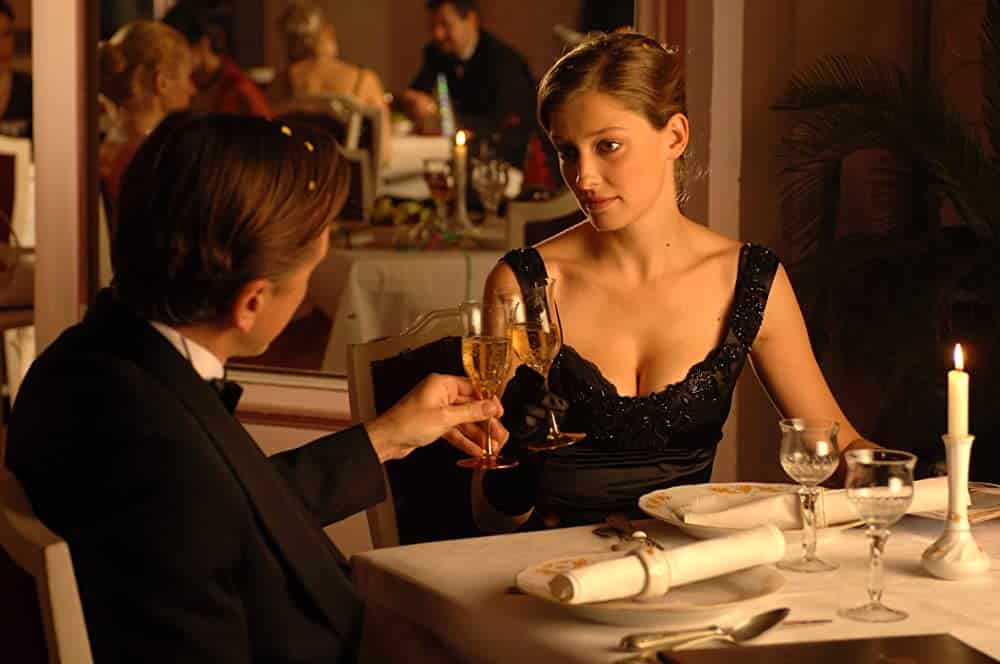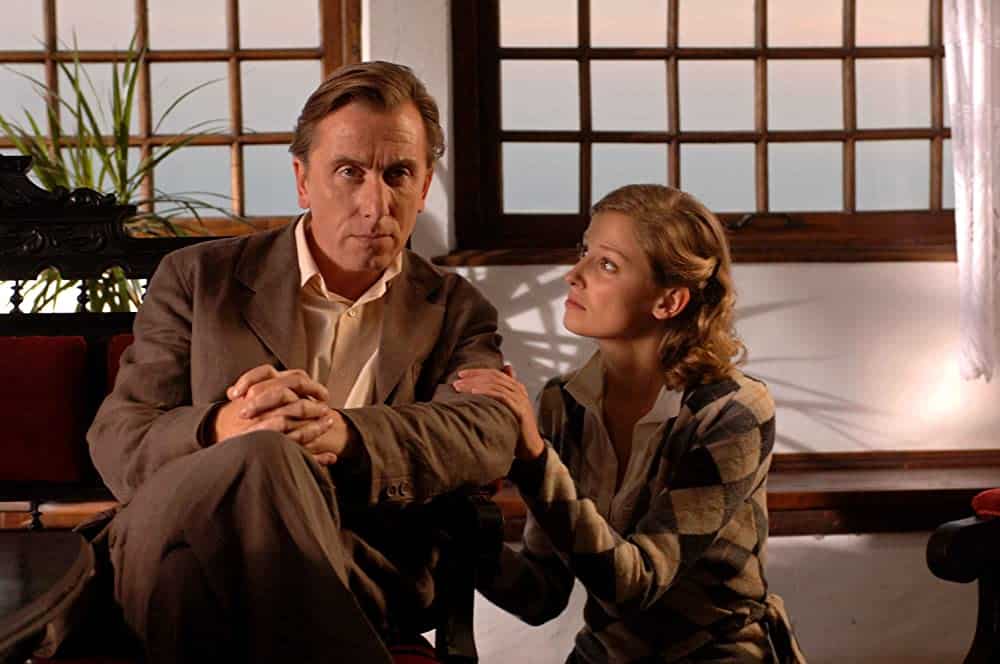Every month, we at The Spool select a filmmaker to explore in greater depth — their themes, their deeper concerns, how their works chart the history of cinema, and the filmmaker’s own biography. For April, we revisit both the game-changing hits and low point misses of Francis Ford Coppola. Read the rest of our coverage here.
In 2007 Francis Ford Coppola made his return to directing after a decade with Youth With Youth, a modern fable about time, loss, and love. Based on a short story by Mircea Eliade, a famous Romanian historian of religion, Youth Without Youth is a curious and cinematic work in which characters become unmoored from linear time, revealing a tragedy underneath the transmigration of souls. Though not well understood in its time, returning to Youth without Youth now, we can appreciate it as a treatise on eternal returns from cinema’s philosopher of Returning.
The story begins when linguistics professor Dominic Matei (Tim Roth) is struck by lightning while crossing a Bucharest street on Easter Sunday, 1938. As he lies in the hospital, his doctors soon discover that not only is he healing quickly, he seems to be growing younger. But Dominic soon realizes this regeneration has psychological and evolutionary implications. As World War II and Nazi scientists close in around Professor Matei, he has to flee to safety before he falls prey to their experiments.

In 1955, Dominic, still conducting self-research in secret, meets a young woman named Veronica (Alexandra Maria Lara) that distracts him for a moment. Lost again in love, he struggles to let go of his deceased lover, Laura (also Alexandra Maria Lara). Just as he opens himself up to this uncanny soulmate, Veronica is also struck by lightning.
Unlike Dominic, Veronica rapidly grows older. Though her body is slow to show the signs of this aging right away, her mind rapidly begins to age through time towards prehistory. Soon she has lost her present memory and begins to speak in ancient languages like Sanskrit before reaching an Ur-language. In trying to be both linguist and lover to Veronica, Dominic realizes they are two touched but ultimately star-crossed souls, ships passing on too cosmic an ocean to remain tethered together.
Roth and Lara bring consistent and top-tier metaphysical melodrama (and in multiple dead languages). Roth skillfully gets at the impossibility of their romance. You can feel emotion poor out when he makes the soul-saving decision to leave. And Lara, in a triple role, masters ancient languages and non-verbal communication to craft a performance that is made by the consistency of her eyes. No matter what (or when) her new character is going through, it has to be the same soul peeking through and Lara’s eyes can show that they know, contain, and are horrified by multitudes.
Time is the most peculiar thing about Youth Without Youth. In many ways, it’s a character. Time is force, place, obstacle, and salvation in this film, in direct keeping with the author’s original ideas.
In addition to his work as a scholar of Indo-Chinese religion and languages, Mircea Eliade also philosophized about what he called “archaic ontology,” the worldview of early humans. Central to this prehistoric way of understanding the world, according to Eliade, is the cyclical nature of time and marking time. Detailed in his most notable work, The Myth of Eternal Return, History, or the finite and linear recording of events, is a terror that must be avoided or alleviated. This most notably happens through religion. For Eliade, ritual and sacred elements help humans return to “in illo tempore,” The Beginning, The Original Moment.
Youth without Youth is thus a well-suited text for Coppola to fully display his reverence for Cinema as another purveyor of Eternal Returns. Film as a whole captures a present and preserves it as the past for the future. By watching a film we can travel back from our present to the world at the moment the film was made.
Time is force, place, obstacle, and salvation in this film, in direct keeping with the author’s original ideas.
But Coppola excels in going one, even two, steps further. First, he attempts to replicate the ontology of the past through the manipulation of aesthetics. Youth without Youth begins with a gorgeous title credit sequence evocative of a 1930s film which, in his directors’ commentary, Coppola states explicitly is to re-create “the mood” of a film from the time in which this movie starts. With trusted right-hand Roman Coppola at his side, the result is a richly detailed cinematic feel inspired by films similar to their mesmerizing work on Dracula (1992). What remains unique about this approach to mise en scene lies in the way it considers the audience.
It’s not enough for Coppola & Son to create a diegetic mood, it has to be extended and experienced amongst the audience. To help us get a sense of history, as if we are moving through time with Dominic, Coppola subtly changes cinematic styles. The chapter in the 1930s flickers and uses silent film techniques in its dream sequences. The 1950s is steady and static with pacing of a Cold War B-movie, the ending a 1960s Sirk melodrama. Sadly, an ironic consequence of this is that the duration of Youth without Youth fits and starts, which can make it difficult for audiences to keep their footing.

Nevertheless, it’s a highly reflexive and thought-provoking cinematic style by a master film historian that changes the way the film feels throughout. And as the credit titles fade, clockwork pieces whirl by, sounding uncannily like the whirl of a film projector. So begins the unpacking of an aesthetic riddle. Coppola lays out an image-thesis for the film, showing glimmers of what is to come. When those moments arrive, we are instantly reminded of the beginning. They call back and call out the director’s hand in crafting a story. The self-aware directorial style fully showcased in Youth without Youth reminds us that a film “in the can” is a film in a circle, edited and woven together with intent.
This doesn’t mean that Coppola’s work is beyond time. On the contrary, by keeping with Eliade’s original themes, Coppola cements in the outdated primitivism that structures them. As Veronica’s mind expands backwards in time, there’s a direct link to the emerging animal nature and the ancient, notably-Eastern languages, she speaks.
Entirely bypassing the historical fact that the speakers of these ancient languages had sophisticated cultures, Coppola sees no issue in having Veronica descend into an inhuman barbarism. For Eliade, The East is at once a mystical place-space beyond time but also decidedly not as “advanced” in time as The West. And Coppola repeats this way orientalism that reveres the philosophy of Eastern peoples, but not the peoples themselves. This is the unintended ideology that’s archived forever that we can return to and learn from.
Yet for Coppola one thing cinema is not is finite. Perhaps the most telling reason why Youth without Youth is a fitting and highly reflective work for Coppola is his continued return to his own work. As he’s demonstrated in his re-edits of Apocalypse Now, The Cotton Club, and his Godfather trilogy, Coppola is not afraid to return to his own past, to the beginning, even many years later. He’s a lot like Dominic in that way: a student of the filmic languages in the past who sees time and film as open-ended, free from a linear march of time.